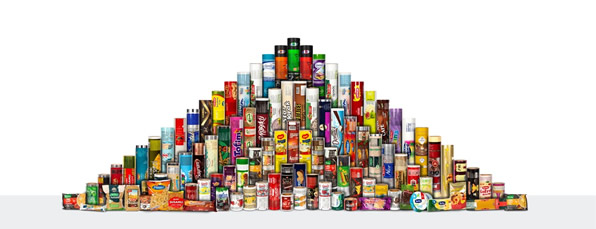
As it is known, one of the main purposes of packaging is to protect the product on which its outer surface is covered. The importance of this situation is particularly striking in the food industry. Because food packaging is very important in terms of protecting the water and nutritional values of food products from many external factors and ensuring human health. Because any damage caused by physical or chemical elements that may occur has the potential to cause economic distress to both the producer and the consumer by causing a loss of quality and safety at the point where it affects food products.
Packaging should keep the product safe during the transfer process between the production facility and the retailer and should be created with practices that will prevent the product from being damaged during the time it remains on the shelf. Therefore, one of the most essential elements is that the product packaging is durable and reliable. Packaging is very important for the product in order to keep the products fresh, to prevent any loss of taste and to maintain this situation throughout the shelf life of the products.
Packaging preserves the freshness and quality of the first day, ensures that the product is intact, fresh and consumable during its shelf life, and prevents loss of taste, contact with moisture, microbial spoilage, etc. It also protects the product against the effects of In addition, considering the damages that may occur during the distribution phase, the packages are produced in a structure that is resistant to the possibility of tearing and punctures, preventing the food from being damaged.
The Role of Cake and Biscuit Group Packaging in Preserving Freshness
The packaging of products such as cakes and biscuits, which are most preferred by consumers, is protected by high pressure and temperature and is among the packaging types that provide the strongest protection. Especially if the biscuits have torn or holed packaging due to low moisture content, this product group quickly loses its texture and freshness. The more durable the biscuit packaging and cake packaging, the more the shelf life and freshness of the product is preserved. The durability of biscuit and cake packaging prevents damage during distribution and protects the product against deterioration. Thanks to its low oxygen and water vapor permeability, the biscuits inside do not soften and the cakes do not lose their texture by drying out. In this way, biscuits and cakes that remain as fresh as the first day reach the consumer. Cake and biscuit packaging must be protected against sunlight and have a low COF value.
• The Role of Chips and Snacks Group Packaging in Preserving Freshness
Packaging used to protect chips and snack product groups under high pressure and temperature is one of the most preferred packaging forms by companies. Chips and snack products maintain their freshness on the first day thanks to the presence of a high aroma barrier. The packaging, which is also protected against sunlight in case the food spoils more easily in the summer months, protects the texture of chips and nuts with its low oxygen and water vapor permeability. Chips and nuts packaging is divided into two different structural combinations, two or multi-layered, in terms of their structure. The packages that should be used for chips and snack product groups are packages that require high barrier properties. Packages with features such as low oxygen and water vapor permeability, low thermal adhesion, protection from light and low COF value should be preferred. This type of packaging ensures the protection of products belonging to the chips and snack product groups.
The Role of Chocolate and Candy Group Packaging in Preserving Freshness
Chocolates are very sensitive about the transfer of odor and taste and should not come into contact with any odor or taste coming from outside. To prevent such situations, chocolate packaging and candy packaging produced with high barrier properties should be used. These packages are protected against loss of taste and moisture and ensure that the products are placed on the shelves as fresh as the first day. Carefully produced chocolate and candy packaging that has no holes or tears must be resistant to melting, especially during summer months and climate changes.
• The Role of Frozen Food Group Packaging in Preserving Freshness
Frozen food packaging, storing these products under appropriate storage conditions and choosing appropriate quality packaging is of great importance for the freshness and shelf life of the product. When faced with any oxygen contact, frozen foods lose their cooled and packaging-supported structure. Frozen foods are more vulnerable to spoilage and possible odors and spoilage. However, this situation can be eliminated with quality packaging and protection methods. Frozen food packaging must have high cold environment resistance and must have absolutely no air permeability.

